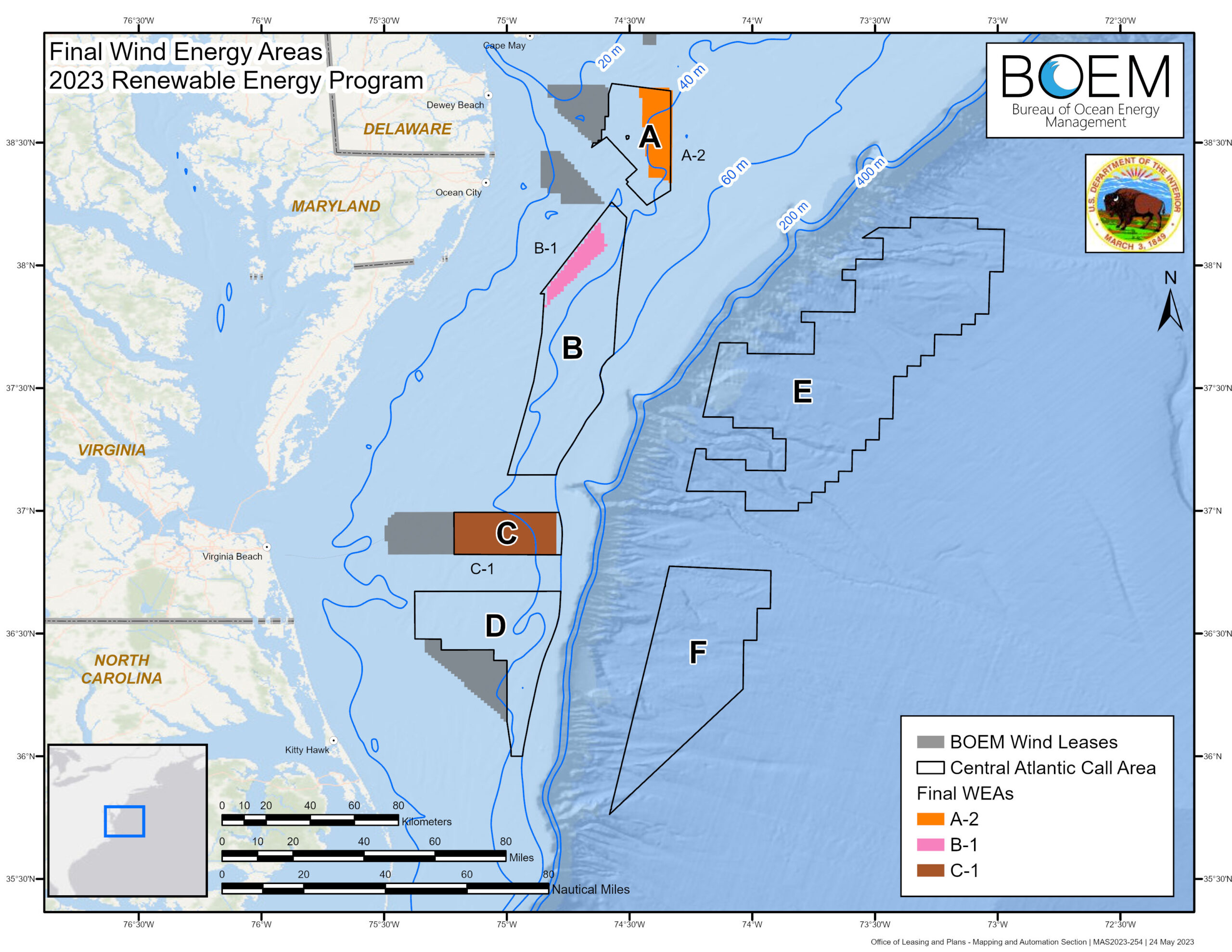
Continuing in efforts to pave the way for offshore wind energy development, the Bureau of Ocean Energy Management (BOEM) has identified three final Wind Energy Areas (WEAs) in the Central Atlantic. BOEM partnered with the National Centers for Coastal Ocean Science (NCCOS) to compile best available data and develop spatial models to identify suitable areas for offshore wind energy in the region. Through extensive stakeholder engagement and interagency collaboration, the WEAs comprising 356,000+ acres were selected from the original 3.9 million acre Call Area.
The ocean is a busy place, and finding suitable areas for new ocean industries is a complex challenge. Ocean neighborhoods support a wide range of ocean users, as well as sensitive natural resources. The NCCOS spatial planning process builds on a comprehensive ecosystem-wide analysis of data for natural resources, ocean industries like fisheries and energy production, and areas of national security. When considering all of these ocean characteristics together, valuable insights are gained about the seascape of the ocean region. Robust spatial analyses equip decision makers with enhanced analytical capabilities, ensuring greater transparency and reduced impacts to other ocean users and the surrounding ecosystem. Additionally, engaging with ocean stakeholders at every step and incorporating feedback into the models has been an essential aspect of this process.
Through this spatial planning partnership in the Central Atlantic, BOEM has identified three final wind energy areas. The first area is ~101,000 acres, located 26 nautical miles off the coast of Delaware Bay. The second area is ~78,000 acres, located 56 nm southeast of the Delaware Bay Inlet. The third area is ~176,000 acres and is located about 35 nm offshore of Chesapeake Bay, Virginia. These regions, spanning over 356,000 acres, hold immense potential to generate renewable energy – if fully developed, these regions can support between 4 and 8 gigawatts of energy production, enough to power 3-6 million homes. This exciting prospect paves the way for a cleaner and more sustainable energy future in the Central Atlantic region.
The next step is issuing a proposed sale notice, or PSN. These initiatives align with the Biden-Harris’ Administration’s ambitious goal to achieve 30 gigawatts of offshore wind energy by 2030, while striving for minimal impact on NOAA Trust Resources and other ocean users.
